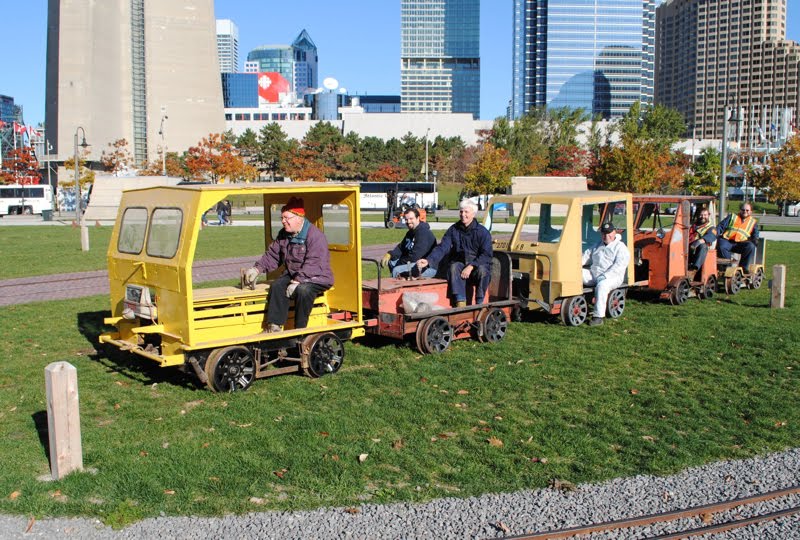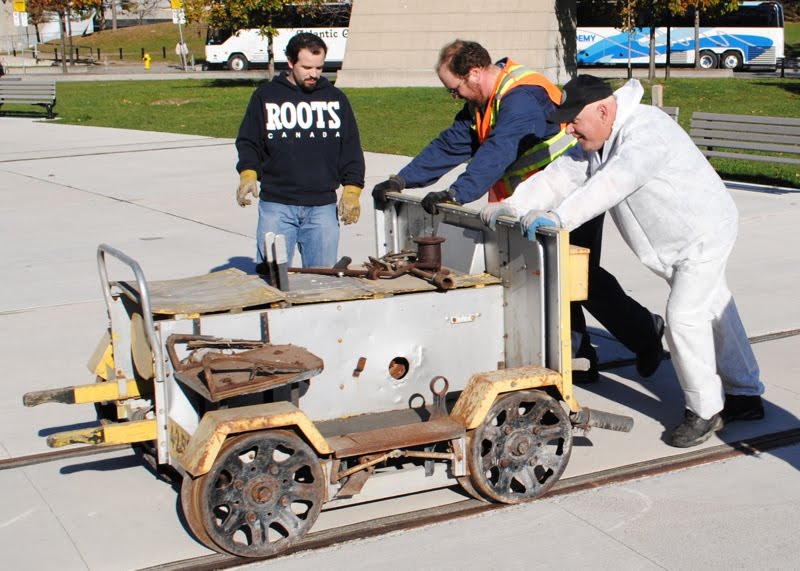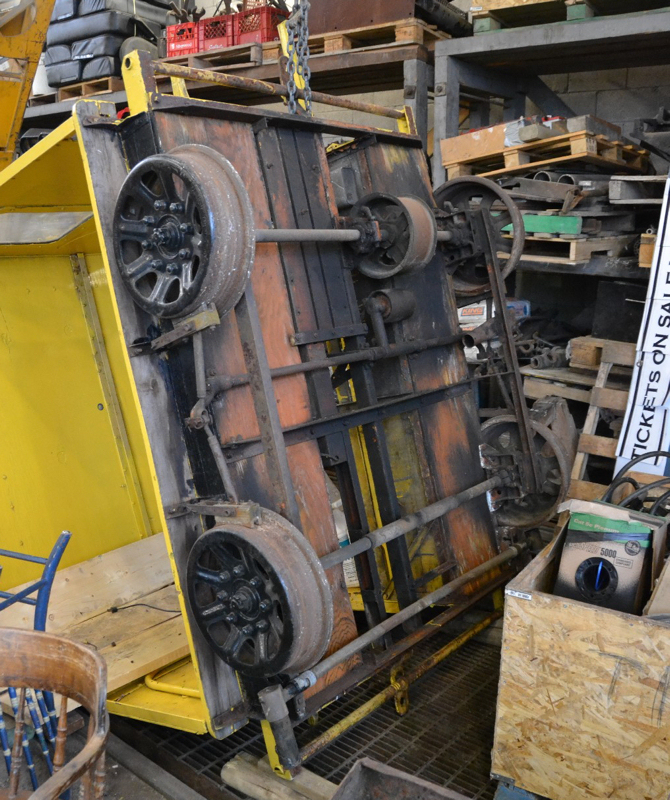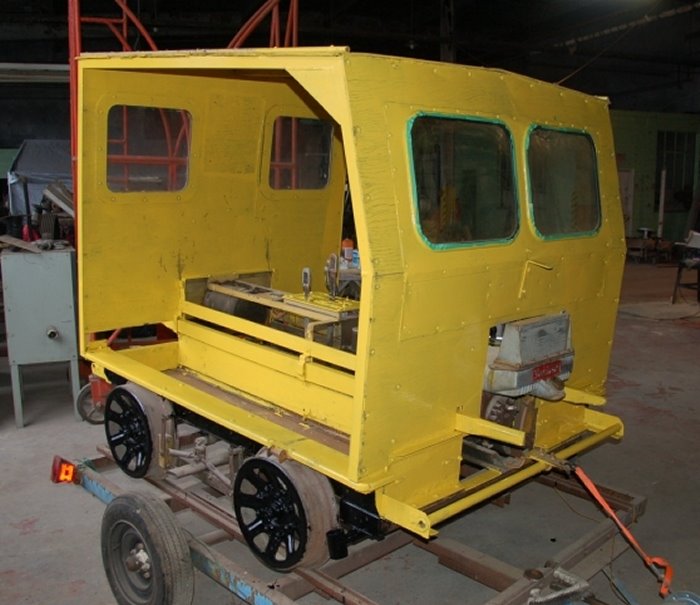The Toronto Railway Museum (TRM) has a number of the four wheel gasoline powered railway vehicles called speeders. None are operational at the present time. The TRM also has a speeder trailer, an unpowered car which was pulled by a powered speeder and used to transport additional maintenance supplies. Our trailer has been converted into a people mover and has occasionally been used with a powered speeder to provide rides at special events.
All of our speeders await further restoration.
History
Wikipedia ( http://en.wikipedia.org/wiki/Speeder ) advises that:
“A speeder (also known as railway motor car, putt-putt, track-maintenance car, crew car, jigger, trike, quad, trolley or inspection car, and also known as a draisine (although that can also be unpowered) is a maintenance of way motorized vehicle formerly used on railroads around the world by track inspectors and work crews to move quickly to and from work sites. Although it is slow compared to a train or car, it is called a speeder because it is faster than a human-powered vehicle such as the hand cars and velocipedes that predated speeders. Motorised inspection cars date back to at least 1896, when it was reported that the U.S. Daimler Motor Company created a gasoline powered rail inspection car capable of 15mph.
In the 1990’s, speeders were replaced with trucks (usually pickup trucks or sport utility vehicles) using flanged wheels that could be lowered for on-rail (called road-rail vehicles or hi-rails for highway-railroad). Speeders are collected by hobbyists, who refurbish them for excursions. These hobbyists often organize themselves into associations so that they can approach railroads to get permission to operate as a train of speeders on excursions. One such organization is the North American Railcar Operators Association (NARCOA) in the U.S. and Canada.





